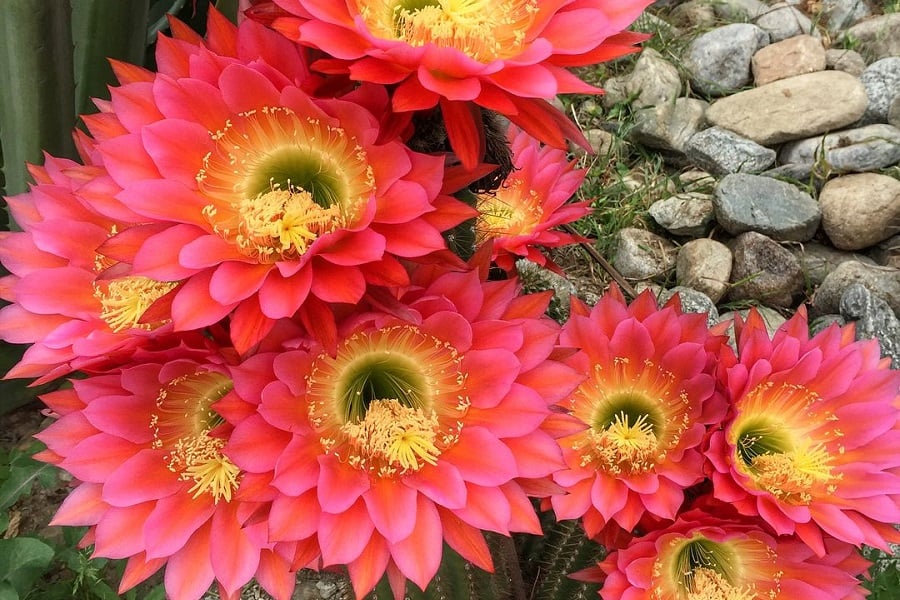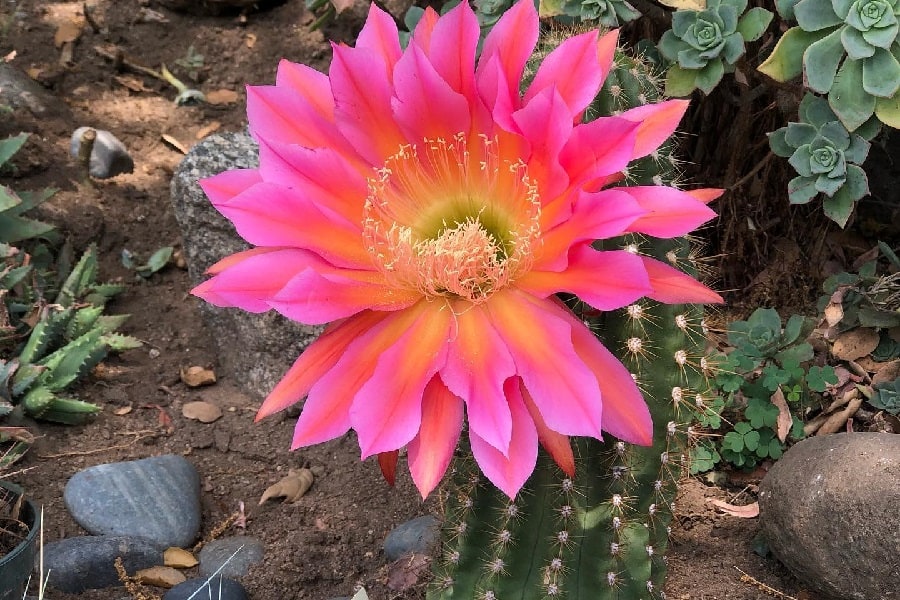Echinopsis Flying Saucer: Characteristics and Care
You’ve heard of UFOs, but have you seen the alien-looking “flying saucer” cactus? With its saucer-shaped body and vibrant pink flowers, the Echinopsis Flying Saucer is one eye-catching plant that looks like it was beamed down from another planet! This bizarre yet beautiful cactus is guaranteed to be the star attraction in any succulent garden. Keep reading to learn all about this otherworldly plant’s origins and how to keep your own flying saucer happy and healthy.

Contents
About Echinopsis Flying Saucer
The Echinopsis Flying Saucer is a hybrid cactus variety originating from South America. It has a short, stout stem that can grow up to 2.5 feet tall when fully mature. The saucer-shaped body has between 10-14 raised ribs covered in spines.
The real showstopper is the layered, saucer-like flowers that bloom in spring. These ruffled blooms can be up to 5 inches wide, with shades of pink, yellow and green that make them look like they’re from another world!
Related Post:
82 Types of Echinopsis With Pictures
How To Care For Echinopsis Flying Saucer
Light
Like most cacti, the Echinopsis Flying Saucer thrives in full sun. Outdoors, position it in a sunny spot. Indoors, place it by a south or west-facing window. You can also use a grow light if you don’t get enough natural sun.
Water
During the spring and summer growing season, allow the soil to nearly dry out between waterings. In winter when dormant, cut back substantially, only watering a little if the saucer starts looking shriveled. A good rule is to stick a pencil into the soil – if it comes out dry, it’s time to water.

Soil
Use a well-draining soil mix made for cacti and succulents. The ideal succulent soil has a gritty, sandy texture to allow excess moisture to drain away from the shallow roots. You can amend regular potting soil by adding perlite, coarse sand or baked clay.
Fertilizer
Feed every 2-4 weeks in spring and summer with a balanced fertilizer made for cacti. Avoid fertilizing in winter when the plant is dormant.
Pests and Diseases
The main threat to the Echinopsis Flying Saucer is root or stem rot from overwatering. Use well-draining soil and allow to dry between waterings. Also watch for common cactus pests like mealybugs, scale, and spider mites. Treat infestations promptly with an insecticidal soap or neem oil spray. With the right care, this unique cactus will thrive.

How to Propagate Echinopsis Flying Saucer
Thankfully, this alien beauty is easy to propagate from offsets! Here are the steps:
- Wait until offsets at the base are 2-3 inches tall before removing
- Use a sharp, sterile knife to cut offsets off at the base as close to the main stem as possible
- Allow offsets to callus over for several days before replanting
- Plant offsets in a well-draining cactus/succulent soil
- Water sparingly until roots form and new growth appears
With its UFO shape and out-of-this-world flowers, the Echinopsis Flying Saucer cactus is sure to turn heads! By providing the right conditions, you can keep this intergalactic plant happy and multiplying for years of otherworldly delight.
